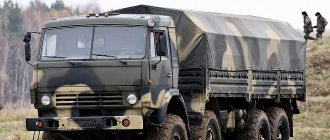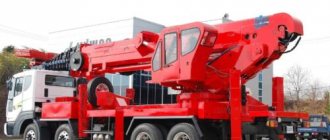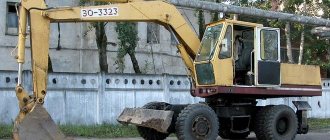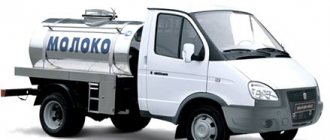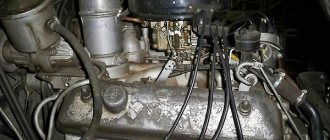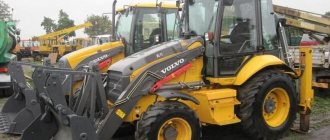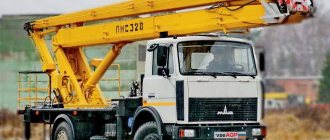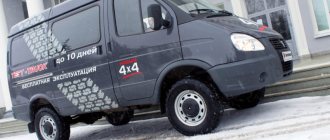No high-altitude work can be done without special equipment. Housing workers, construction workers, landscaping services, advertising agencies, fire departments, window installation companies and even home and office cleaning agencies all resort to the use of special lifting equipment.
The result of high-altitude operations, first of all, depends on the reliability and safety of special equipment. After all, you need to lift not only tools, but also people. This type of equipment is called an aerial platform. A special platform on a lifting leg, installed on a car platform.
Today, the choice of aerial platforms is quite diverse, the cost varies depending on the technical equipment. Developers of lifting devices have created many machines in this direction, taking into account modern technologies.
Classification of types of aerial platforms and hydraulic lifts
- home
- Blog
- Classification of types of aerial platforms and hydraulic lifts
/
/
Aerial platforms are special equipment used to lift workers to perform construction, installation and other work at height. Workers, along with tools and materials, are placed in a cradle mounted on a boom.
Automotive hydraulic lifts on the market can be classified according to several criteria, based on the purpose of the machines, the design features of the boom, the base chassis and the method of fixing the platform on the boom.
Knowing the features and differences of each category of special equipment, you can rent an aerial platform whose technical parameters are suitable for performing a specific type of work.
Types of AGP by purpose and type of boom
The main purpose of any aerial platform is to lift workers to a height. In accordance with the format of the work, renting an AGP allows you to order the following machines:
- Universal – special equipment involved in construction and electrical installation work.
- Specialized – the services of this type of aerial platform are in demand when servicing bridges and other non-standard structures.
- Automatic towers for power lines are machines that provide safe maintenance of live lines.
Arrow classes have the following indices:
- AGP – auto hydraulic lift;
- PSS – boom-type self-propelled lift;
- AP – car lift;
- TV – telescopic aerial platforms with vertical lift;
However, the model index may not reflect the type of boom being used. In order to choose a suitable machine and order an aerial platform with the required parameters, it is necessary to study the models of equipment offered by domestic and foreign manufacturers at the present stage.
Aerial platforms by boom type and chassis type
Car lifts, depending on the type of boom, can be elbow, telescopic or combined. All varieties can be equipped with a maneuverable platform, allowing access to hard-to-reach areas.
Depending on the chassis used, it is possible to rent aerial platforms installed on:
- Domestic and foreign trucks (a popular service is Japanese aerial platform rental).
- Minibuses;
- Caravans.
The equipment is installed on the base chassis of such truck models as: MAZ, KAMAZ, Ural, etc. In addition, minibuses, trailers and other equipment are used. For cases where the type of boom for the job is not important, the brand of the chassis, the lifting capacity of the equipment, or the height of the boom are often noted instead - this will be quite enough to select the appropriate model.
Download the service agreement
This is interesting: Classification of bulldozer driver categories
Where to buy aerial platform
offers to buy auto hydraulic lifts inexpensively, at the price of the manufacturer. The company's website presents a large selection of telescopic aerial platforms. All vehicles are equipped with support structures to secure the boom during operation and prevent the risk of tipping over. Lifting equipment is sent to all regions of the Russian Federation.
Auto-hydraulic lifts differ in boom radius (from 27 to 70 m) and boom rotation angle. The control system guarantees complete control over operations. Ultra-sensitive sensors monitor the movement of equipment at all stages of operation: from the angle of rotation to the position of the boom and the weight load. Special equipment is an indispensable solution when working at heights.
For aerial platforms, the manufacturer's price is valid all year round. To order equipment, you need to dial the company’s phone number and agree with the manager on the terms of direct delivery. When concluding a transaction, a purchase and sale agreement is drawn up directly and without intermediaries.
Popular AGP models
A high-quality aerial platform will help you out in any situation: during force majeure and planned work, during private construction and large orders. Today, Korean-made cars – Horyong and Hansin – are in high demand on the Russian market.
Why?
- attractive price - significantly lower than analogues from other manufacturers.
- high quality. There are no complaints about it: reliable “workhorses” among aerial platforms are resistant to any mode and weather conditions.
For low-altitude work, the Horyong SKY 210 models with a working height of up to 18 meters or SKY 280 up to 22 meters are perfect. Good load capacity - 300-400 kg, rotation radius of 360 degrees, reliable Hyundai Mighty (HD78) chassis. And as a bonus - an attractive price.
When it comes to working at greater heights, you may need the Horyong SKY 360 with a reach of up to 36 meters and a basket load capacity of up to 400 kg, as well as the Horyong SKY 380 SQ with a working height of 40-42 meters.
Horyong machines can handle complex tasks at high altitudes: SKY 4504 N with a reach of up to 50 meters (maximum load capacity up to 400 kg) and SKY 500 VP with a delivery height of up to 50 meters (up to 550 kg).
Purchasing such special equipment is not cheap, and if you need a tower intermittently and for different purposes, the expense will not justify itself. It is smarter and more economical to rent a suitable aerial platform from a specialized company. Our fleet includes all popular Korean-made AGP models. To select, use an independent search on the site or contact specialists by number.
« to the “Tips” page
Other tips
The tallest aerial platform in the world
What documents are needed to supply an aerial platform to Rostekhnadzor?
Telescopic aerial platforms: characteristics and principles of operation
Aerial platform services
Manufacturers - who are they?
The aerial platform market is quite large, and about 90% of this market in Russia belongs to domestic manufacturers. In general, about thirty enterprises in the CIS countries work in this area. Among the most notable enterprises in Russia is Pozhtekhnika OJSC (Torzhok), specializing in the production of articulated fire trucks, as well as producing lifts of all types, covering a range of working heights from 15 to 50 m and mounted on GAZ, ZIL, MAZ chassis, "Ural", KamAZ, Hyundai, MAN, Tatra. JSC "Avtogidropodjemnik" (St. Petersburg) produces car lifts of the PPS series based on the chassis of domestic manufacturers GAZ, ZIL, KamAZ with a lifting height of the working platform from 8 to 38 m.
The Kazan Electromechanical Plant (KEMZ) successfully produces about 30 models of articulated and telescopic auto-hydraulic lifts BC, APT and TA with lifting heights from 14 to 28 m on the chassis of GAZ, ZIL, KamAZ, Ural, Hyundai vehicles under the Ak Bars brand. The latest Kazan development - APT-30 has a telescopic 30-meter boom with a jib and a rotating working platform.
Magnitogorsk produces three types of auto hydraulic lifts: AGP 22-1 and AGP22.06 based on the ZIL-131 chassis and a hydraulic lift on the Ural-4320-10 chassis. The large domestic enterprise "Chaika-Service" assembles on various chassis, both Russian - GAZ, KamAZ, and foreign - TATA, Isuzu, Hyundai, Nissan, Mitsubishi FUSO, lifts of both Italian production and Russian-Italian under the Socage brand, providing a lifting height of the working platform of up to 75 m. Nizhneturinsky has been producing hydraulic hydraulic lifts for more than 30 years. Today, the enterprise’s program includes two models based on the ZIL-433362 vehicle, providing repair and restoration work at heights of 18 and 23 m, respectively. Lyudinovsky Machine-Building Plant (Kaluga region) produces articulated car lifts under the Lyudinovets brand based on the ZIL-433362 chassis with a working height of 22 m and a lifting capacity of 300 kg, as well as a loading capacity of 120 kg on the GAZ-3310 chassis for work at heights up to 12 m. Krasnodar assembles aerial platforms based on the GAZ-3309 and -3302 chassis.
Moskovskaya has a wide range of auto-hydraulic lifts in three-arm and telescopic versions on the chassis of the Gorky Automobile Plant. On the GAZ-3309 and GAZ-33081 chassis, two-armed lifts VS-18.04 with a lifting height of up to 18 m, VS-22.02 with a lifting height of up to 22 m, three-armed lifts BC-22.02 with a lifting height of up to 22 m, as well as telescopic lifts APT-18.02 are mounted with a lifting height of up to 18 m. The APT-14.02 telescopic lift with a lifting height of up to 14 m is installed on the GAZ-33081 chassis. The GAZ-3309, GAZ-33104, GAZ-3302 chassis are suitable for the TA-22 telescopic lift with a lifting height of up to 22 m . If necessary, the lifts are equipped with a cradle with special electrical insulation that can withstand power up to 1000 W. Isuzu chassis were also used. The Isuzu NOG71P is equipped with telescopic lifts PAG-18 and three-joint lifts AGP-22.04 produced by the Lyudinovo Machine Plant.
Foreign-made auto-hydraulic lifts are presented in Russia in small quantities, especially new ones, due to their high price. The best-selling ones include Merlo (Italy), Bronto Skylift Oy Ab (Finland), Liebherr (Germany), Tadano (Japan) and a number of Chinese brands that are in the middle price segment. All foreign car lifts are subject to mandatory Russian certification, and this is also a deterrent to foreign expansion.
The American company Versalift has a good reputation in Russia. The product of its production is a wide range of lifts. The company produces both conventional serial towers and professional, isolated lifts for high-altitude work associated with great responsibility and complexity. Until recently, the Moscow enterprise Kominvest-AKMT installed Versalift lifts with lifting heights from 8 to 35 m on special chassis of domestic and foreign production, and special Versalift aerial platforms for railways with quick-release lifting equipment.
The buyer, wanting to purchase road construction equipment, wants to spend as little money as possible, and the seller wants to sell it more profitably. In order not to receive low-quality goods and not to overpay to numerous resellers, it is better to purchase equipment from companies that work directly with manufacturers.
Working height
Based on lifting height, this special equipment is classified as follows:
- low-altitude (up to 17 m). Mainly used by utility services to replace street lighting and repair glazing;
- medium-height (18–28 m). Designed for repair and maintenance of buildings, structures, and various energy facilities;
- high-rise (more than 28 m). Highly specialized special equipment for performing specific operations at significant heights.
Where are aerial platforms used?
The most common use of an aerial platform is to lift a person or two to fix something at height. This could be a wall or an electrical pole. It is also advisable to use the tower when:
- Performing electrical installation work on rolling wires on transmission lines or replacing them.
- Facade work related to the installation of lighting fixtures or the installation of festive garlands and other things.
- Cladding work or reconstruction of the building facade.
- Installation of external insulation of the room.
- Installation of split systems for industrial premises or air conditioners in a private home.
- Outdoor advertising stretching.
- Trimming tree branches along roads or in private areas.
With the use of an aerial platform, these works are performed much faster and easier. So keep this in mind if you encounter something like this.
There are only 3 types of aerial platforms . Their essence is the same - to be a tool in the hands of a person so that some work can be simplified. But each of them has its own characteristics, so it is more advisable to use different devices for different jobs.
This is interesting: Classification of concrete mixer trucks by volume
Purpose
Car lifts are classified according to their functional purpose:
- universal. Can be used to perform a wide range of construction, electrical (and other) works;
- specialized - for servicing bridges;
- special for repairing power lines.
Load-height characteristics of the PSS-131.22E aerial platform on the KAMAZ-43502 chassis
Average load capacity and height
Aerial platforms vary in lifting capacity. This parameter can be located in the range from 100 to 800 kg. Most of the manufactured aerial platform models are characterized by a load capacity of 250-400 kg.
According to the maximum lifting height of aerial platforms, there are:
- low-altitude - up to 18 meters;
- medium-height - from 18 to 40 meters;
- high-rise – from 40 meters and above.
Accordingly, these two indicators are fundamental in determining the cost of a purchased or rented aerial platform.
Among the aerial platforms with gigantic capabilities, we can note the foreign equipment RUTHMANN STEIGER TTS 1000, capable of lifting the cradle to a height of up to 100 meters with a load capacity of up to 500 kg.
By chassis type
Lifting equipment can be mounted on different chassis:
- domestic or imported trucks;
- minibuses;
- car trailers.
Most often, aerial platforms are installed on the chassis of trucks MAZ, KAMAZ, Ural, ZIL, UAZ, GAZ, Hyundai and others. Some bases are only suitable for certain lifting equipment, which is limited by their lifting capacity.
Video: Aerial platforms
Telescopic aerial platforms
The most popular type of aerial platform in Russia are telescopic lifts. They are capable of lifting to considerable heights. But the main advantage of these lifts comes down to ease of operation. It can be done in two ways: from the cab and using the remote control. The remote control is capable of transmitting a signal at a distance of up to 60 m. Another advantage of telescopic lifts is their amazing accuracy. The cargo is delivered to a height strictly according to the specified parameters, down to the centimeter.
Workers of telescopic aerial platforms can rest assured that modern achievements of science and technology were used in the creation of these devices. The lifts are equipped with a smart computer security system that will prevent incorrect actions. If there is a serious error in control, the lift will be automatically stopped. These aerial platforms have undergone statutory inspections by technical inspection specialists.
However, telescopic devices are not without some disadvantages. The most significant of these is the size of the lifts. They cannot be called compact. This is a full-fledged automotive equipment that is not particularly maneuverable and can take up a lot of space. Servicing of such aerial platforms is not so easy. The last problem becomes especially acute when you have to inspect or repair equipment in a small space.
Telescopic and articulated aerial platforms: what are the differences?
December 05, 2014
The most common boom designs are articulated and telescopic aerial platforms. Let's look at what their main differences are.
Articulated hydraulic lifts appeared much earlier than telescopic ones. Assembly and disassembly of the articulated aerial platform is carried out by folding the boom like an accordion. An articulated boom contains two or three bends (sections) connected by axial hinges. The extension and folding of the knees is carried out using hydraulic cylinders. The cranked boom design is simpler and therefore more often used.
Features of articulated aerial platforms:
- sections of the boom of an articulated aerial platform are bent and stacked on top of each other (this mechanism uses a lot of space, but is considered more reliable);
- car lifts of this type are less demanding to operate than telescopic ones;
- The boom rotation angle is 360 degrees, which creates additional convenience during operation;
- the ability to feed the basket (cradle) in vertical and horizontal directions;
- versatile, reliable and safe.
These features give the articulated aerial platform additional operational advantages, under equal conditions, that are not available for the telescopic aerial platform.
Despite the fact that the cost of articulated towers is much lower than telescopic ones, they are more expensive to maintain, this is due to the fact that an articulated aerial platform consumes significantly more energy, this can be explained quite simply: the weight is not distributed evenly on this equipment.
During transportation, an articulated aerial platform will be more compact than a telescopic one, but it requires more free space for its operation.
You should also take into account the fact that the boom extension crank drive cannot provide maneuverability, which significantly limits the scope of application of these aerial platforms. That is why crank towers are used today when carrying out work on sites with a large amount of free space. Moreover, the cost of renting or purchasing them is lower than when working with analogues equipped with a telescopic boom.
Articulated hydraulic lift VS-28K
The telescopic mechanism is a boom consisting of several tubular elements that extend one from the other like an antenna. This principle allows the aerial platform to easily lift the cradle to any required height. The extension and folding of the knees is performed by cable-chain or hydraulic mechanisms. This design not only has increased reliability, but also ensures maneuverability of the cradle, allowing access even to those objects that are located in limited space. The functionality of telescopic towers is significantly expanded if the equipment can operate at a negative angle. However, telescopic towers cannot perform horizontal movement of the cradle.
Telescopic auto-hydraulic lift APT-30
Telescopic ones are designed for work in cramped conditions - in narrow yards and on city streets.
Telescopic lifts are often equipped with a special “jib” - an additional bend that lifts the cradle. This device improves maneuvering and facilitates precise delivery of the platform to the work site. Dual control of the movement of the working platform (from below from the car and from above from the cradle itself) allows you to work more efficiently. Using a cable-chain drive or hydraulic cylinders, the boom is extended to the desired height. The use of such a mechanism allows you to create a smoother movement of the cradle when lifting.
Telescopic auto-hydraulic lift TKA-37 with jib
For safety reasons, modern telescopic towers are equipped with special locks that do not allow the movement of the boom until the hydraulic supports are extended, hydraulic locks that prevent unauthorized retraction of the hydraulic supports, and others.
Another advantage of telescopic aerial platforms is their light weight. It is achieved through the use of square pipes that form the crane boom. The light weight of the boom and auxiliary equipment significantly expands the possibilities for using automobile chassis.
Nowadays, the use of aerial platforms is becoming increasingly widespread and is constantly gaining popularity. After all, this is a convenient and simple way to solve a wide variety of problems.
An articulated view of the aerial platform.
A very famous type of aerial platform that everyone saw in childhood.
They are very affordable and are much cheaper to rent than their counterparts. The main advantages of these mechanisms include their low cost and ease of maintenance. With such machines, the tower boom shoots at 17-20 meters. This type of aerial platform is most often used during construction work, due to the functions of the boom. It has very high maneuverability and maneuverability. It is indispensable if:
- It is necessary to raise the craftsman to a certain height for façade or construction work;
- Cut trees along the road or wires;
- Lower the worker into the dug trench;
- It is necessary to carry out construction work under the bridge (for this they use a three-armed tower).
It is easy to operate such a machine, but there is a drawback, which is the installation of counterweights for operation. Pulling a person under a bridge or lowering him into a trench is not easy, and something needs to hold the machine, otherwise it will simply collapse along with the workers. Powerful counterweights help, but they take up a very large space, so in narrow places it is already problematic to use.
Compliance with safety rules in the cradle of an aerial platform
High-altitude repair operations carried out in a hydraulic lift must meet safety requirements. Workers over 18 years of age who have passed a medical examination and are authorized to work in the AGP basket can be in the cradle of the hydraulic lift.
The boom with workers and equipment is not allowed to be lifted if the wind speed is more than 10 m/sec. If the wind speed increases during repairs, it is necessary to lower the lifting mechanism and interrupt the work process.
Work cannot be carried out in difficult weather conditions: precipitation, poor visibility, as well as at critical sub-zero temperatures.
If the operator notices that the mechanisms responsible for the safety of work are faulty, for example, the maximum permissible load limiter has failed, the tracking system for orienting the basket in a horizontal position is faulty, or the end locks are not working, the work should be stopped.
The weight of the lifted tool, equipment, or cargo must not exceed the weight declared by the equipment manufacturer.
Design
Car towers are distinguished by design:
- geniculate. A lot of space is required to rotate the boom, they have a high load capacity, horizontal movement of the cradle;
- telescopic. Compact equipment where the working basket moves upward using a retractable telescopic boom;
- combined. The machine is equipped with two types of equipment, which expands the range of its applications.
All of these types of car lifts can be additionally equipped with a standard or telescopic jib. A basket is attached to it, which allows you to get into the most inaccessible places. Sometimes the cradle is equipped with a rotator. He allows it to rotate around its axis.
Telescopic tower is the most popular type of hydraulic lift
Telescopic aerial platforms consist of a main section with a powerful hydraulic cylinder, retractable sections with their own hydraulic cylinders and pulleys, a chassis and a working basket (fixed or rotating). Their main advantages:
- compact and ergonomic design - the machine can drive through arched openings, work in park areas and other sites with limited space;
- low maintenance, simple, durable and reliable control system.
- the ability to lift loads to a height of up to 35 m and weighing up to 800 kg, as well as work at a negative angle.
- rotation of the platform to a certain radius, feeding of the basket in different planes.
- equipped with special locks that prevent the machine from moving until the hydraulic supports come out, and the hydraulic cylinders do not allow the boom to move spontaneously.
- mesh boom design, which reduces the overall weight of special equipment.
- ability to work indoors during large-scale construction of large projects.
The most common modifications of aerial platforms are an aerial lift (AP), an aerial hydraulic hoist (AGP 18, AGP 22, AGP 28, AGP 29, AGP 30, APT 17, APTL 18), an aerial hydraulic telescopic hoist (APT), a tower (VS), a telescopic tower (VT) , telescopic stair lift (APTL), telescopic car lift (TA).
All of the above types of aerial platforms are produced on the basis of domestic or foreign chassis, minibus or pickup truck. There are also towed structures that are mounted on the chassis of a car trailer.
Classification and principle of operation
Both its cost and demand depend on how high the aerial platform rises, and, in fact, the classification is carried out. Thus, there are three varieties: low (up to 17-18 m) and medium (17-28 m) height, as well as high-rise (over 30 m) auto-hydraulic lifts. It should be said that telescopic representatives of this special equipment are presented in all three categories, although low-altitude towers are the most common, due to the application of safety measures.
Telescopic aerial platforms are currently the most common devices among other types, due to their convenient design and technical performance. One should not discount the fact that the price offered for a telescopic hydraulic lift is acceptable both for powerful construction concerns and for small organizations engaged in construction or installation work in other industries.
What else can be said about telescopic hydraulic lifts? Yes, the operating principle of this technique has not yet been revealed. So, first, the aerial platform is installed on a special vehicle or chassis platform by securely fastening it. The assembled aerial platform itself has a fairly compact structure, as a result of which it can be delivered for work in any conditions.
When starting, the elements of the aerial platform extend one from the other sequentially. Due to the increasing load and possible imbalance, the aerial platform is securely secured with special stoppers, eliminating the possibility of falling or overturning. Moreover, the telescopic hydraulic lift is used not only for lifting people for work at height, but also for a certain amount of cargo (200-300 kg).
Spare parts for special equipment. Tires for special equipment.
Buy spare parts, tires and components for loaders and special equipment from the warehouse and on order. Organization of delivery of spare parts for special equipment throughout Kazakhstan.
Catalog
- Excavators
- Backhoe loaders
- Front loaders
- Forklifts
- Mini loaders
- Motor graders
- Mini excavators
- Rollers
- Dump trucks
- Asphalt pavers
- Road milling machines
- Drilling rigs
- Mining trucks
- Cranes
- Manipulators
- Platforms and booths
- Attachments
- Tires
Contact Information
- Republic of Kazakhstan, Almaty
- st. Bukhtarminskaya, 9B
- tel.
- e-mail:
Branches
- Republic of Kazakhstan, Nur-Sultan
- st. Zhetigen, 29/1a
- e-mail:
- tel.
- Republic of Kazakhstan, Shymkent
- st. Tamerlanovskoye Highway, 115
- e-mail:
- tel.
- Republic of Kazakhstan, Aktobe
- st. Sankibay batyr, 167A
- e-mail:
- tel.
- Republic of Kazakhstan, Karaganda
- st. Kamskaya, 87/8
- e-mail:
- tel.
- Republic of Kazakhstan, Atyrau
- st. Taymanova, 1G
- e-mail:
- tel.
Fill out the form and we will call you back!
Installment plan
Credit
Ransom
TRADE-IN
Leasing
Technical characteristics of aerial platforms
The correct selection of a tower directly depends on whether the technical characteristics meet your needs. The cost of the car you plan to rent also depends on the configuration.
There are several types of AGP, but they all consist of three important elements:
- hydraulic lift with rotary boom;
- cradle (working platform);
- support mechanisms - outriggers.
As a rule, the carrying capacity of the cradle is from 200 to 300 kg, take this into account when planning work.
According to the boom lift height, it is customary to distinguish three types of AGP:
- small height: from 12 to 18 meters;
- average height: from 18 to 30 meters;
- high-rise aerial platforms from 30 to 55 meters.
There are also super-high-rise vehicles, the boom height of which can reach or even exceed 100 m. They are used for rescue work, for servicing skyscrapers, as well as for similar highly specialized tasks.
Such a characteristic as the lateral reach of the arrow makes it clear in what space a given vehicle can operate. On average, this figure ranges from 8 to 20 meters. If work is to be done in workshops or warehouses, a machine with a large side reach may not fit inside the structure. When the space is not limited (an open area, without close buildings, green spaces), the choice becomes simpler.
The AGP is controlled by the operator from the cabin or from the platform, sometimes remote access is possible. Essentially, all control comes down to two maneuvers:
- lateral, vertical, rotational movement;
- cradle movement.
As a rule, modern aerial platforms are equipped with an emergency switch that allows you to lower the cradle manually (using pneumatic or hydraulic pressure) if an emergency occurs.
Types of aerial platforms
Typically, aerial platforms are classified by boom type. There are three main types - telescopic, cranked and combined. All of them are equipped with a hydraulic drive, which sets the structure in motion.
There are also vertical lifts and scissor lifts. But due to the fact that they are only capable of working in one plane (exclusively raising and lowering loads), they are not used often. Their scope of application is industry, warehousing and storage of goods, repair work.
Telescopic aerial platform
Telescopic aerial platforms are equipped with a boom, which consists of several sections. When folded, they are nested inside each other. When the tower needs to be raised, the sections begin to move longitudinally relative to each other (like an antenna).
Image source tespa.ru
Aerial platforms with a telescopic boom are characterized by a significant lifting height, smooth operation and compactness. When folded, they can move on public roads without creating any difficulties, even in heavy traffic. Thanks to this, they have received maximum distribution in public utilities and advertising companies.
Modern models of telescopic aerial platforms use a computer lift control system. This ensures precise positioning of the cradle, maximum smooth movement and the possibility of remote control. For example, lifting can be carried out by operators located on the work site.
Among the disadvantages of this mechanism are the small lateral reach of the boom and low load capacity.
Articulating aerial platform
Articulated aerial platforms have a boom that consists of several rigid spans connected, as the name implies, by “legs.” It folds and unfolds like an accordion.
Such aerial platforms are characterized by a significant lifting capacity and the possibility of lateral outreach of the boom, which determines their scope of application - construction, high-rise repair work, laying power lines. But at the same time they are less practical than telescopic ones. As a rule, most of these machines have a low lift height (no more than 32 meters), and due to their significant dimensions, the movement of such special equipment on public roads can be difficult.
Image source: wikipedia.org
Today, articulated aerial platforms are produced much less frequently than telescopic ones. However, such companies as Vitebsk Lifts and some other manufacturers still have them in their assortment.
Combined aerial platform
Combined aerial platforms have a complex boom design that combines articulated and telescopic elements. However, thanks to this, it retains the advantages of both types and is devoid of their disadvantages.
Image source tespa.ru
Thus, combined aerial platforms are characterized by high load capacity and the possibility of lateral extension of the boom to a significant length, the ability to rotate the boom 360 degrees around its vertical axis, and a high lifting height. Such special equipment has found application in the energy sector (laying power lines), maintenance of forested areas, public utilities, construction and other areas. For example, it is used to correct the consequences of fires and various accidents.
Vertical aerial platforms
This is the most primitive and least used type of aerial platform. Their lifting mechanism unfolds so that it can only lift the load vertically. It will not be possible to perform any other maneuvers with such a design. For this reason, the scope of application of these aerial platforms is extremely narrow. But in a number of areas, for example, in warehouses or when repairing power lines, vertical lifts can completely cope with the task. The only noticeable advantage of this lifting device is its large lifting capacity.
Features of the tower as a lifting device
A distinctive feature of a tower is its purpose: lifting a worker or work team with the necessary tools to a given height, usually small. A classic telescopic tower has a height reserve of 6-12 m, rarely more, and a facade lift can turn 30-40 m of the wall of a high-rise building into a working area.
Other features of the towers include:
- Mobility - due to their moderate height, such lifting devices can be easily moved from one object to another without dismantling. This applies to self-propelled mechanisms, of which the majority are now produced.
- Autonomy - the towers are not “tied” to any base structure (like façade lifting systems, beam cranes, etc.) and can be used in any place where the need for high-rise work arises.
Based on the design of the lifting mechanism, a distinction is made between mast, or telescopic, and scissor towers.
Select a tower or other type of lift
The answer to this question depends entirely on the nature of the work that is planned to be performed using lifting units.
In construction, powerful high-altitude lifts on guides, with a rack/cable drive, are more effective. But for interior finishing, maintenance of lighting and air conditioning systems, and other operations that require a reasonable balance of height and mobility, towers are better suited.
In the variety of modern offers, one can highlight lifts and towers with more universal capabilities. Thus, there are scissor towers with a high lifting height and cargo lifts designed for heavy loads, but at a low height. An excellent “intermediate option” are articulated lifts, equally suitable for construction and minor repair operations.
Stacker and loader.
What is the difference Who can operate an electric stacker Choosing a shock-absorbing group for electric forklifts and stackers Purpose and main types of stackers Stacker, reach truck and loader - what is the difference Types and differences of hoists Technical equipment of a warehouse - the path to success Safety precautions when working with a forklift Organization of warehousing of goods The difference between a telescopic tower and a lift The purpose and design of electric tractors Safety rules when working with stackers Electrical diagram of a mast lift Safe warehouse: work rules for employees Manufacturing of metal racks Transport tax on warehouse equipment New directions - new opportunities New level of construction work! We get maximum benefit from warehouse space and volume!
Source
